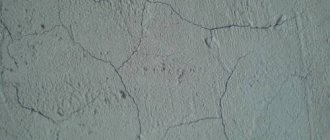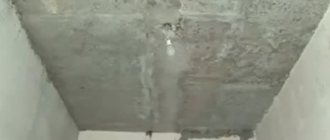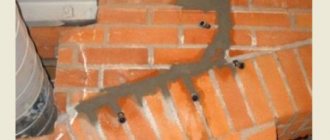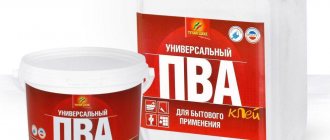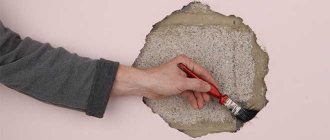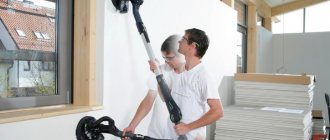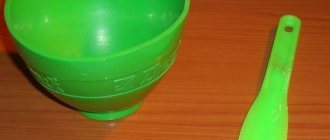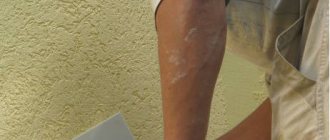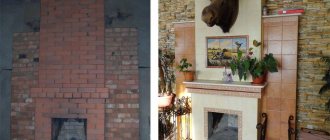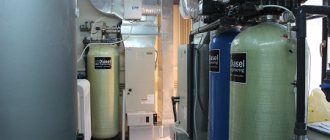Plaster allows for high-quality repairs in almost any room. The material is quite cheap and even a novice master can handle its application. This does not require the use of any special tools, so there will be no special financial costs. During the work, cracks may appear in the plaster, which will lead to serious complications. In this article we will look at the reasons why plaster cracks when it dries and how to deal with this problem.
Why does plaster crack when it dries?
Plaster is a type of exterior and interior finishing, without which it is impossible to carry out high-quality and complete renovation of a residential or commercial premises. The presence of certain skills, accuracy and a primitive tool allows you to apply it yourself. But you shouldn’t rule out possible difficulties in the form of cracking either.
Why does this happen, since the instructions for preparing and using the solution are pleasing in their simplicity, and even elementaryness? In reality, few people read the manufacturer's manual completely and carefully, relying on their own intuition and experience. In the meantime, even one small point not observed leads to the fact that after application and complete drying the coating cracks.
This publication is entirely devoted to answering the question of why plaster cracks when drying, and how to prevent additional expenditure of time, effort and money.
Preparation of the solution
Clay or cement plaster is made from various components, their proportions are perfectly aligned, and there is no doubt about the effectiveness of such cladding. But if lumps of sand or cement remain while mixing the solution, this will lead to cracking of the coating. Therefore, during preparation, try to stir the mixture as best as possible until a homogeneous mass is formed. If the work turns out to be difficult, we recommend using a construction mixer. It can easily cope with mixing. Also, before preparing, read the instructions again, they may contain useful tips.
What are the types of cracks?
Based on the type of origin, the following types of cracks are distinguished:
- Constructive. They arise from overloads due to design errors, improper operation of the building, and the use of inappropriate grades of cement.
- Unconstructive. They appear due to violations of drying technology and unfavorable conditions for crystallization of solid concrete.
- Created during a fire. Exposure to high temperatures contributes to the formation of delamination of the material due to the expansion of the reinforcement and the large temperature difference between the external and internal layers.
Non-structural cracks are divided into several types:
- Consequence of plastic shrinkage. Caused by the high drying rate of concrete. Outwardly, they look like barely noticeable cracks as thick as a human hair and up to 75 centimeters long.
- Consequences of temperature shrinkage. Crystallization under high temperature conditions causes the appearance of strong stresses that destroy the top layer. The direction of the rupture is from outside to inside. The width of the gaps ranges from tenths of a millimeter to several millimeters; there are cracks that are centimeters wide.
- Corrosion cracks.
Formed due to corrosion of reinforcing bars located close to the surface. Most often they are the result of a violation of pouring technology or improper assembly of reinforcement. They appear after several months of use.
Most of the resulting ruptures are of a non-structural nature and occur on almost all foundations.
The absence of cracks is characteristic of the foundations of special structures of high responsibility, created using special technologies from a specific material. The permissible values of deformations and breaks are clearly defined by SNiP, which regulate the size and depth of possible surface disturbances.
Plaster peeling
They arise as a result of improperly executed wall priming. If scratches have already appeared on the market, there may be water under the plaster, which freezes in winter and also causes peeling.
How to disconnect? First, you should carefully remove plaster that does not adhere well to the surface. Then the free spaces are re-primed and filled with new plaster. What is very important is that they must be of the same type and also have the same grain size. Unfortunately, in most cases the “new” location will stand out from the façade.
What influences the appearance?
First of all, we wonder why the plaster cracked after application. It turns out that this is influenced by certain factors, the main one of which is the shrinkage of the structure, which creates internal stress, depending on the correct adherence to the technological methods preceding drying.
If you have prepared everything correctly, mixed the solution according to strict proportions, followed the order of its application to the surface, all that remains is to ensure the solidification conditions - the ambient temperature and the level of moisture content in it. Another point is to protect the new coating from sunlight - the plaster solution should dry naturally.
But why does cement plaster crack when it dries?
Violation of application technology
Based on the results of an analysis of experience in the construction and operation of structures, even ancient architects created sets of rules for performing work, compliance with which reduced or eliminated the occurrence of various defects. This is how technologies appeared, the violation of which negatively affects the quality of the result. The technology for applying the plaster solution takes into account the slightest nuances that help prevent the appearance of defects, for example, at what temperature the composition should be prepared, applied and dried. But violation of these rules will lead to the need to repair cracks that appear in the plaster on the wall of a house or apartment.
As an example, let’s look at what a violation of technology leads to when plastering drywall. If a too thick layer of gypsum mixture is applied to a sheet of plasterboard or the temperature conditions for drying are violated, a network of hairline cracks appears in the plaster. It is no longer possible to repair it; the entire plaster layer will have to be removed and a new gypsum compound (no thicker than 2 mm) applied. If more thickness is needed, then the second layer is applied after the first has dried.
Improper surface preparation
Each material from which a wall or ceiling is constructed implies various preparatory measures that must be carried out before finishing with the plaster mixture. If notches are not applied to the concrete surface, or the seams of the brickwork are not opened, fat deposits are not removed, etc., the adhesion between the base and the covering material will be low. The layer of plaster will begin to peel off and burst.
A similar situation is possible if the wall was not properly dried before finishing work, and the water has a destructive effect on the coupling.
Cracks will certainly appear in areas made of different materials if the joints are not reinforced with mesh.
Neglecting the primer layer
Applying a primer solves two problems: it increases adhesion and closes the pores of the base. Heavy plaster coating requires high adhesion, and the absence of a primer will certainly affect the strength of the connection between the mortar and the wall, which must work together.
If you do not seal the pores (even small ones), then porous brick, cellular concrete and other wall material, as soon as the solution gets on it, begins to suck water out of it, which is necessary for the processes of crystallization or polymerization to occur (this is necessary for the hardness and strength of the coating ).
One more nuance. The composition of the solution does not always coexist peacefully with the base substance, for example, when applying a gypsum plaster mixture to concrete, the cement and gypsum react chemically. The plaster layer swells and falls off. Gypsum, penetrating into the cement coating, destroys it from the inside. Due to the different behavior during the hardening process, lime plaster cannot be applied to gypsum, because lime decreases in volume, while gypsum increases. If you need to connect different materials, then there must be a primer layer between them.
It is not recommended to neglect the primer. Therefore, it is necessary not only to apply the primer mixture correctly, to make the required number of layers, but also to select the correct primer composition. Each layer of primer is dried for the time specified by the manufacturer.
Lack of reinforcing mesh
Another reason why plaster cracks after drying may be failure to install reinforcing mesh. The mesh can be made of metal, plastic or fiberglass depending on the layer of plaster and the risk of it falling off. We recommend that you do not neglect the installation of this structure; it will help the plaster adhere better and prevent the formation of cracks.
Using poor quality or old mixture
Poor-quality plaster is called plaster whose components or proportions do not meet the requirements. Such solutions do not last long. For example, if the cement content in the cement paste is more than a third of the volume of sand, the solution behaves like oily clay that bursts when it dries. A reduced content will not provide the required strength. Along with unwashed sand, silt particles enter the composition, reducing the strength of the coating, so this mixture is considered to be of poor quality.
The shelf life of SS (or dry mixes) depends on the condition of the binder, for example, cement, which loses activity over time. The strength of solutions made from expired composition is reduced. You need to use mixtures that have not expired.
A mixture with insufficient water content or with an excess of it is not entirely suitable. Since water is needed for chemical reactions to occur, a lack of liquid is the reason for a decrease in the strength of the finished finish. Excess prevents the solution from sticking to the wall without slipping, increases drying time, and free water molecules interfere with the formation of crystalline bonds and strength gain.
Presence of dust
So as not to ask the question: “What to do if the plaster is cracked?” – before you start applying it, you must remove dust from the surface. A large amount of dust impairs the adhesion (degree of sticking) of the plaster solution and over time can cause peeling of the coating.
To do this, there is no need to sweep the wall or subject it to any cleaning measures - just moisten it immediately before starting work.
Walls uncleaned from debris
An error that leads to sealing cracks in the plaster of internal walls may be hidden in failure to follow the rules for cleaning the walls from the remains of the old covering layer, grease, fungus and mold stains.
One layer coating
The mortar mixture is applied in several passes. If you immediately make a thick coating, it will dry on top earlier, and the solution remaining inside will not have enough carbon dioxide, which will make it gain strength more slowly. A difference in physical states is formed, the unevenness of which leads to the appearance of cracks. By distributing the covering layer into several, the likelihood of such a phenomenon is significantly reduced, each batch of applied solution hardens more easily, and the coating is durable.
The freshly prepared solution contains a lot of weight due to its water content. When the composition is applied in a thick layer, the masses located below cannot withstand the load and slide off. During the drying process, a weak bond is created, cracks appear on the wall, and the finish peels off easily.
The second reason why plastering is carried out in layers is to create adhesion between the base and the top layers. The applied spray will stick firmly, create an acceptable load, and will not slide down. The mixture is made liquid, applied in a thin layer, and it dries quickly. The soil, which is characterized by a thicker mixture, reliably adheres to the surface.
The coating is kneaded thinner and distributed in a thin layer. The solution lying below and already dried does not have a negative effect on it.
If, before applying the next mortar layer, the bottom of the previous one has dried out, the coating will receive maximum strength.
Incorrect mixing of the solution
The consistency and correct mixing of the solution also affects its quality, and, consequently, the durability of the coating. The accompanying instructions indicate how to mix the mixture before application. Failure to follow the order of loading components into the container can lead to the formation of lumps and unmixed substances that spoil the solution. A large number of mixer revolutions is unacceptable, especially for mixing silicate compounds.
Everything is important:
- mixing order;
- gradual introduction of components (all or in small portions);
- mixing speed;
- temperature of added water;
- standing time;
- consistency;
- periodic stirring of the solution during application (to lift settling heavy particles).
From clay and sand
A mixture containing clay and sand is classified as fatty, since the main component is such. They are difficult to apply to the base, and there are a number of nuances:
- A surface with a lot of unevenness. On this basis, the plaster will begin to crack very quickly. If the owner wants to avoid restoring the decorative layer for a long time, then you need to take care of the flat surface of the wall. which means doing rough leveling.
- High humidity or regular surges. This will definitely cause cracks to appear. Clay mixtures do not tolerate moisture well, so they are not used to decorate walls in the bathroom or kitchen.
- The layer is too thin (less than 5 mm). In this case, the water from the solution evaporates too quickly. In order for the plaster to become as durable as possible, this process must proceed slowly and evenly. Otherwise, the plaster on the walls will crack immediately during drying.
Ultraviolet and heat
After applying the solution, it needs time to dry and gain strength. In this case, suitable conditions are needed:
- absence of drafts;
- temperature readings should be no more than +25 °C;
- Avoid direct sunlight on the surfaces to be treated.
Often, during facade work, the coating is exposed to direct UV radiation. As a result, the applied solution loses moisture too quickly, which leads to uneven drying of the finish. And when the material dries, the plaster becomes covered with cracks of various sizes.
Attention! To avoid these troubles, interior work should be carried out with the windows closed with thick curtains. As for the treatment of the facade, it is better to choose cloudy but dry weather.
Sunlight can cause cracks
Moisture ingress
Excess moisture in any form is dangerous for plaster: it greatly affects the quality of the coating. Water can get onto the finish in the following ways:
- from the solution if a lot of liquid was added when diluting it;
- from a wall that remains damp after priming or applying the previous plaster layer;
- from the air (if the humidity level exceeds 70–75%);
- if the vapor permeability coefficients of the base and finish do not match.
It is not allowed to prepare a solution that is too liquid
Any of the factors listed can cause disturbances during the drying process of the plaster layer, as a result of which it will lose its integrity.
Damage to load-bearing structures
As a rule, this is typical for old buildings. Deformation of load-bearing elements entails the appearance of cracks, and not only in the finishing layer, but also in the walls themselves.
Foundation deformation
If all finishing requirements are met, but cracks still form on the plaster, the cause should be sought in the foundation, which is most likely subject to deformation. You will have to find out the reasons for this and take appropriate measures to eliminate them, and then move on to repairing the cracks.
Shrinkage of the structure
Within 1–2 years, new buildings tend to shrink, and we are talking about both concrete and brick buildings. Even the mortar, which serves as a layer between individual blocks, can dry out, which causes cracking of the plaster. If super-elastic compounds are used for finishing new houses, such problems will not arise.
Damage to plaster due to building settlement
Violation of basic construction technology
Modern mixtures have excellent performance characteristics. But if the master neglects the basic rules, then cracks will appear in any case. To choose the right plaster, you need to consider a number of nuances:
- Adhesive properties. If the degree of adhesion of the material to the surface is insufficient, the applied material may crack. In some cases, the entire layer of plaster may fall off.
- Vapor permeability of the main structure and mixture. The values must be at least the same so that the hardened composition does not fall off. But it is best if the applied finishing layer allows steam to pass through more quickly.
Small defect
In order for the result of the work done to be durable, you need to follow the basic rules for applying plaster:
- The surface must be covered with soil.
- The wall must be processed in one day.
- It is necessary to use reinforcing mesh.
- The weather should be dry and windless.
Important! In the attached instructions, the manufacturer always indicates the basic recommendations that must be followed when applying plaster.
Educational tips from experts are presented in the video:
Other plaster defects
There are two main types of defects in nature:
- technological;
- operational.
In the first case, they arise due to non-compliance with building codes and recommendations. Which often manifests itself in improper mixing of the solution. Operational defects usually include cracks and peeling that appear due to wear and tear of building structures.
Dutiki
This is a technological defect that is associated with improper preparation of the solution. This problem occurs when using lime compounds. In particular, the addition of quicklime or it was prepared poorly.
Due to the unextinguished particles, the process continues inside the plaster, resulting in the formation of swellings (bumps) on the surface with a white spot in the center. The entire coating loses its strength and evenness.
Areas with tubercles must be moistened generously and removed, cleaned well, and then reapplied with the plaster mixture. Lime milk or slaked lime should be passed through a sieve with cells of 0.4x0.4 mm. This will prevent any unquenched particles from getting into the solution.
Ducking on plaster occurs due to improper preparation of the solution
Swelling and peeling of plaster
Peeling and swelling are rare, but they do occur. Basically, this problem occurs when using gypsum and lime mixtures. There is a violation of technology here - little time was given to dry the layer. The damaged coating must be removed and then allowed to dry. Only then can the building mixture be reapplied.
If the selected composition does not correspond to the parameters of the current level of humidity in the room, it should be replaced with a suitable option - sanitizing, waterproofing analogues.
The peeling of the plaster occurs due to a violation of technology
Efflorescence
Efflorescence is also known as efflorescence. Their appearance is associated with high levels of humidity in the room. This is a clear sign of insufficient ventilation and what you need to pay attention to, otherwise fungi will begin to develop on the surface of the walls.
To combat deposits, you should try dissolving them in water. Special tools that are available in any hardware store will do. The work cannot be done without the use of metal scrapers, brushes, and rollers.
Efflorescence on plaster is associated with high humidity levels
Rust spots
Rust stains and other traces of other origins can turn into big troubles. The reasons for the defects that arise are as follows:
- the metal parts in the wall remaining during the finishing work were not treated with any insulating agent (oil paint);
- after plastering, metal beacons remained;
- leakage of metal communication pipes located inside the wall;
- stains on the ceiling surface may indicate a leak in the roof or ceiling;
- the appearance of stains that resembled rust near the stove or fireplace - the result of the interaction of oil and soot; There is a type of fungus that forms colonies with a characteristic “rusty” tint.
The first reasons require a complex approach - in order to remove beacons or eliminate pipe leaks, it is necessary to trench the surface. Next, re-cover the damaged area with a new solution.
Foci of biological damage are neutralized, then the area is washed, primed, and putty is applied. Grease stains can be easily removed with any degreaser (white is suitable). Next, the area to be treated must be coated with primer in 2 approaches and dried. Then cover everything with white paint and observe whether the stains appear again.
Rust stains may appear on lighthouses
Cracks in the husks
There are several reasons:
- Unsuccessful joint of coatings made of different materials - wood and concrete, plaster and brick.
- The wooden surface is overdried and the material, which has absorbed moisture, has increased in size.
- Insufficient fixation of structures (partitions).
Before processing joints of dissimilar materials, they must be pre-reinforced. Dry wooden surfaces should be moistened with water before plastering. Any structure must be firmly fixed, which should be ensured before finishing work.
A crack in the husk occurs due to an unsuccessful joint of the coatings
Performing grinding
Since cement plasters are shrinkage mixtures, after drying they can lead to the formation of multiple small cracks on the wall surface. In order to get rid of this defect, you need to grind. To do this, perform the following sequence of actions:
Tip: only lime dough with a mushy structure, prepared in a 1:1 ratio with sifted sand, is suitable for grinding. No other compositions are suitable for this type of work.
By leaving a comment you agree to the Privacy Policy
Source
How to stay safe?
A huge number of different rules have been invented, the strict implementation of which will lead to quality work done. It is important to give them due attention before applying the mixture:
- Before applying the mixture, wet the base with plain water. Use a spray bottle to make this task easier;
- The air temperature in the room where finishing takes place, allowing the work to be performed at the highest level, should be less than 24 degrees. If the conditions are met, the cement plaster will not crack, but just give it a reason;
- Such seemingly harmless little things as a draft and direct sunlight will certainly cause irreparable consequences that you will have to regret. Their access should be denied;
- A solution applied to a work surface with a thickness of more than 2 cm must be secured using beacons;
- Before applying a new layer of the mixture, you need to make sure that the plaster of the previous layer has not cracked and has firmly set;
- The gypsum mixture must be less than 1.5 centimeters thick, the cement mixture less than 2 cm;
- Everything matters in finishing. To the question: “Why does the plaster on the walls crack?” out of mind, the working surface and its features should be taken into account in the same way as the characteristics of the plaster. Therefore, it is necessary to remember that the solution is applied to brick, stone and concrete bases with a thickness of less than 0.5 cm, and on a wooden base - less than 0.9 cm;
- Be sure to pay attention to the recommendations indicated by the manufacturer on the bag of future plaster;
- It is important to create a solution of the correct consistency, so it is necessary to follow the order of mixing the components.
Compliance with these simple rules will have a positive effect on the work performed. Further sealing of cracks in the plaster may be necessary only in cases of subsidence of the house.
Conclusion
The reason why plaster cracks can be any slightest mistake during finishing. Therefore, we recommend that you approach the process of wall cladding with all responsibility, so that later complications do not arise. Use only high-quality materials and carefully follow the manufacturers' instructions. Also, before work, be sure to clean the wall of dirt and dust and treat the surface with a primer. If you follow all the tips given in the article, you can avoid the formation of cracks. We also recommend watching a special training video, in which you can see how to avoid cracks on plastered walls:
Source
What to do if cracks appear?
Problems arose on aerated concrete:
Correction is useless when the cement plaster cracks, you have to remove it and start finishing work from the beginning. Now, knowing the basic rules, you will be able to do it correctly. It is important to use materials designed specifically for aerated concrete work.
Helpful advice! When performing the initial finishing of this material, it is advisable to first finish the finishing inside the room, and then take on the façade of the building. This mistake is extremely popular when hairline cracks in plaster behave strangely, constantly appearing and disappearing, but their size is quietly increasing.
Problems due to variable humidity:
- Cracks that appear due to constant changes in humidity levels require urgent identification of the cause of these jumps and its elimination. After closing the source of moisture, thorough drying is necessary so that the plaster does not crack again and the question disappears: “What to do?”
Poor quality or old mixture:
- The only correct solution would be to completely remove the finish and replace it with a new one.
Mechanical characteristics of the working surface:
- It is necessary to study this problem in more detail and pay special attention to the nuances. Perhaps the appearance of hairline cracks in the plaster was influenced by ordinary subsidence. Some impatient citizen was busy applying the solution, completely lost sight of the importance of waiting the required time, and this is the result. However, this case allows you to simply repair cracks in the plaster, this time withstanding the full subsidence time recommended by the manufacturer.
- A vertical deviation is an incredibly unpleasant and heavy thing, requiring strengthening of the structural parts itself. After which it is possible to seal cracks in the plaster.
Helpful advice! Use beacons made of ordinary paper tape so that mechanical changes in the design are always under control. This method is simple and reliable. You need to stick the tape on the problem area and wait. A torn tape will indicate that the structure is moving, which means that the destruction process could not be stopped. The only correct conclusion is that you will have to get to work to fix the problem. If the tape is in perfect order, then you can safely start covering thin cracks in the plaster so that they don’t warp.
Restoration work
Plaster repair also involves removing stains from the wall surface. They appear during operation and can be caused by grease, soot or rust. It also happens that the stains formed before the finishing work. In this case, you will have to solve this problem before you start gluing wallpaper or laying tiles. Restoration work is as follows:
Advice! Whatever surface you're cleaning, it's important to clear it of dirt and dust first. Only after this other manipulations are performed.
The restoration of the surface under the tiles requires special attention. The procedure is as follows:
How to restore the integrity of plaster?
Plastering defects and methods for eliminating them can only be accurately determined by a specialist. At the same time, he must adhere to certain rules. Among them are:
- thoroughly kneading the solution;
- periodic wetting of the plaster at high indoor temperatures;
- creating a layer thickness of no more than 1.5 cm;
- reinforcement of corner and joint areas with a special nylon mesh;
- preparing a more elastic mixture for ceilings than for walls.
Small plaster defects can be removed using finely dispersed putty. It is sold ready-made in tubes or jars. Dry material has a larger powder fraction. Acrylic paste is suitable for repairing microcracks. Removing large cracks is a serious job and is carried out using grouting with a solution of gypsum and chalk. First, all the plaster along the crack is removed to the base.
A strip of parchment up to 20 cm wide is placed along the exposed section of the wall. A strip of corrugated metal is fixed to it, the location of the edges of which should be perpendicular to the crack line. Then spraying is carried out with a solution, then with soil, and finally with a covering. A special problem is mold and mildew, which are still quite difficult to combat. Delaminations in places with high humidity are corrected using waterproof putty. But before this, the old plaster is removed, the surface is disinfected and an insulating mixture is applied.
Shrinkage rate of the structure
Experienced builders have encountered situations where the composition is chosen and prepared correctly, and the mixture is applied to the base with high quality, but cracks still appear in huge numbers. The explanation for this is quite simple - the structure suffered a certain shrinkage. Even the most elastic composition cannot withstand such a heavy load.
Houses can settle for the following reasons:
- Under the influence of vibrations, the walls deviate from the vertical. This situation is common in cases where the house is built near highways with high traffic.
- Natural shrinkage. After the construction of the property, you need to leave it for some time without finishing, so that all the materials involved are fixed in place as much as possible.
- Walls may deviate due to wear and tear of the entire structure.
The first and last options necessarily require initial strengthening of the structure. Only after this the master can resort to jointing and sealing all cracks.
Shrinkage result
Repairing plaster on walls after drying
The causes of defects may be errors in finishing and mixing the solution.
Preparation for work and algorithm for carrying out repair activities
If the cracks that appear on the plaster look like a fine, thin mesh, you can get rid of them using regular water-based paint.
If the thickness of the defect is greater than a human hair, it is necessary to use putty.
Algorithm for identifying and eliminating cracks on walls.
Here, to carry out repairs, you will need to prepare the following materials and tools:
- container with water;
- wide brush or spray bottle;
- narrow and wide spatulas;
- putty.
First of all, you need to designate the work area. It is necessary to carefully inspect the surface to identify small or large defects. After this, the cracks need to be scored with a narrow spatula, which will allow the putty to adhere more firmly to the plaster on the walls.
One of the reasons for the appearance of defects on a recently treated surface is a violation of the rules for applying putty. Most often, it manifests itself in the rapid absorption of moisture contained in the putty solution by the walls.
To prevent the putty from cracking, it is necessary to wet the walls with water using a brush or spray before starting work.
If the damaged area is quite extensive, it should be divided into areas of about 1 m3 and treated one after another.
Then you need to take a wide spatula, scoop up a little of the composition, placing it along the edge of the tool, and run the spatula blade across the crack. This way, the putty will penetrate deeper, better filling the voids. The action must be repeated until the entire area has been processed.
After this, the repair technique changes slightly: now it is necessary to treat the cracks with a spatula not across, but along, moving from top to bottom. In this case, the tool must be held at a slight angle to the wall. When all defects have been repaired, excess mortar should be removed and the surface of the walls should be leveled for final sanding.
What tools will be needed to seal the resulting cracks?
To properly carry out repair work, first prepare the following tools:
- brush;
- brush;
- staple;
- gypsum-based solution;
- thick sandpaper.
Important! Buy the required type of dry mixture - identical to that used to create the entire coating.
Filling cracks with mortar
So, the tools are in place, the mixture is ready, the surface is dry - let's get started! Fill the crack space with excess solution. Do not skimp on the solution and use enough of it so that it covers the edges of the crack and protrudes slightly beyond it.
Finally, rub it in so that the surface is smooth, as if the crack was never there. If your wall has colored plaster, buy a mixture of a similar color and apply this solution over the base using a damp sponge. That's all!
Repairing cracks in cement plaster:
- plaster that needs to be trimmed;
- net;
- sheathing;
- crack from the corner of the window frame.
Repairing hairline cracks
As noted above, cracks in cement plaster can appear due to settlement of the house. So-called hairline cracks are small cracks with a thickness of 3 to 5 mm. These cracks can be easily sealed with a high-quality exterior sealant.
Take a tube of caulk and cut the end so that the caulk can come out in a fairly thin strip. Fill the crack with sealant so that it does not get on the surface of the plaster.
There are sealants available in a variety of colors, so when choosing one, you should not have any problems with the fact that it may not match the shade of your wall. Be sure to choose a sealant that is approved for paint. Otherwise, if you are going to repaint the wall and the sealant is not suitable, a problem will arise.
Sealing hairline cracks with a high-quality exterior sealant:
- there is no need to widen the crack;
- hairline crack;
- the tip of the tube with sealant must be cut to obtain a thin stream;
- The sealant tube is guided along the crack.
Installation of beacons
Experts recommend installing beacons on cracks in the wall immediately after detecting a defect and observing the result for 8 to 10 days while all the necessary materials are prepared to prevent further destruction. Plaster and solutions based on it, special devices and strips of paper are used as beacons.
Before installing beacons on a crack in the wall, you need to clean the place where they are attached. Otherwise, the beacon will slide off along with the plaster.
Paper strips are stretched across the break and glued on both sides. When the walls move, they tear.
Gypsum beacons are placed indoors. Mix the plaster with water until it reaches a thick putty consistency. The composition is made into something like a dumbbell with wide edges and a narrow middle. A beacon is attached across the defect. You can put marks on it on both sides at a certain distance. Then use them to measure the size of the displacement.
For external use, a cement-gypsum mixture is used. It is less susceptible to moisture.
Professionals are armed with various instruments, including micrometers that are mounted on the wall and record the slightest displacement in hundredths of mm in both directions.
General principles and rules of repair
Now we know everything about how to repair cracks in plaster on a wall. Repairing cracks is also a process, and if some rules are not followed, new defects may appear.
We plaster, following the rules:
- We begin repairing cracks caused by shrinkage of the structure by repairing the supporting structures or waiting for the end of natural stabilization, otherwise the new coating may soon also crack;
- We repair cracks that appear due to dampness and high humidity after eliminating the causes;
- We do not cover up broken plaster of poor quality, but clean it off the walls and replace it with new one;
- We are looking for repair compounds from the same manufacturer and the same brand as in the old coating (if impossible, we select those that are similar in properties);
- if we apply a cement coating, we do it without interruptions over the entire wall in one pass;
- Repairs (outdoor and indoor) are carried out at temperatures above 5 – 35°C, humidity up to 80%;
- when choosing a composition, we focus on those whose vapor permeability is the same or higher than that of the base material;
- if gypsum concrete partitions are made of two layers of slabs, we connect them to each other with bolts placed in the middle of the slab in a row at a distance of 1.5-2 m (the entire length of the partition).
Primer layer
The plaster must be applied in layers, this will help to avoid possible complications. Layering is used not only for decorative finishing, but also for all other types of solutions. A possible reason for the formation of cracks may be the treatment of the wall with one layer.
Also, many people neglect to pre-finish the wall with a primer mixture, but this is an extremely important process. The primer not only strengthens the wall, but also significantly increases the level of adhesion, which allows the cladding to adhere well to the surface. Also, during the drying process, cement plaster gradually changes its structure and shrinks. The primer takes the entire blow, becomes covered with cracks and fixes the applied layer of plaster in place. But for clay solutions this rule is not relevant, although in this case priming is mandatory. As you can see, applying primer is extremely important and if you neglect it, the plaster will inevitably crack.
Prevention measures
Eliminating cracks after plastering is more difficult than taking preventive measures. Failure to comply with plastering technology and sedimentation are the main causes of cracks. Cracks due to wear of the coating during operation are less common.
Therefore, adherence to technology during construction and plastering is the main preventive measure. The condition of the wall surface is usually paid attention to during cleaning and cosmetic repairs (painting, wallpapering). If cracks appear, the degree of their stability should be determined. Unstable cracks (can open and close) often indicate current deformation of the house. It is better to cover up stable (not increasing over time) individual cracks without waiting for preventive grinding of the wall.
If you have a plastered house, then the appearance of cracks in the plaster coating is not a reason to panic, since even a beginner can cope with them. About what to cover and how to repair cracks in the plaster on the wall of a house is described here. Information on the preparation and application of solutions is available in the sections Types of plaster and Plastering.
General points
Depending on the type of damage to the old plaster layer, you need to take a certain sequence of actions, as a result of which the wall surface will become smooth again and suitable for applying a new finishing coating. However, there are a number of rules that are true in any situation:
1. To repair the old plaster layer, it is necessary to use solutions based on the same binder that was used in the old mixture.
2. It is better not to prepare a solution for plaster yourself from various ingredients, but to purchase a ready-made repair composition (for example, Ceresit, Vetonit, etc.). To use them, just add water according to the specified proportion and mix well.
3. If after repairing the plaster it is planned to use a solid dense finish (tiles, panels), then the choice of solution for repair does not matter, since spots of a different color in the repair areas will be hidden by the coating. In this case, it is enough just to be guided by the requirements of material compatibility.
Mechanical damage to insulation
You can get to it mainly in the event of a strong blow with a sharp or hard object that “sticks” to a significant depth of the facade. Insulation can also be damaged by extreme moisture, such as water pouring out of a gutter. This situation can be very problematic, since a large area will need to be repaired.
First, cut out the missing piece of the facade (remember that it should be the same thickness as the previously cut piece) and put it in place. Then we apply a new reinforcing mass, melt the mesh in it and apply a second layer of mass. When everything is dry, we start priming. Finally, we apply new plaster.
Source
